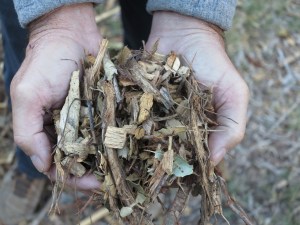Do you use predictions of seasonal climate to plan your garden work? Or are you frustrated because they don’t seem to be very useful? I’ve been getting a lot of complaints this year about how bad the climate forecast for winter was because what we have seen so far has not matched the predictions in many parts of the country. Let me take a few minutes to explain how they are made and what you can learn from them.
First, let me specify that I am not talking about long-range climate forecasts for 50 years down the road. Nor am I talking about weather forecasts for the next week. I am talking about the forecasts that cover the period from about 15 days to 3 months, which climatologists call the “seasonal to sub-seasonal forecasts”. These are the kinds of forecasts that say “Winter is likely to be warmer and drier than normal” or “Get ready for a big warm-up in the next month.” They can be useful in planning garden work a few weeks ahead, but they come with caveats.

Unlike weather forecasts, there are only a few models that predict climate in the monthly to seasonal time period. That is because we can’t just run the weather models out four to twelve weeks and expect to get anything like real weather. The weather models are built to handle short time steps and detailed information about temperatures, rainfall, and all the other factors that make up your daily weather, and to do it fast enough that you can actually use the forecast to decide when to wear your raincoat. They are useful out to about a week, but then their accuracy starts to break down because there are too many things going on around the globe to capture accurately over time, and so the short-term models tend to drift away from reality the farther from “now” you get. Models for monthly to seasonal climate tend to be based not on dynamical atmospheres like weather models but on statistics.

NOAA’s Climate Prediction Center (https://www.cpc.ncep.noaa.gov/) is the biggest provider of seasonal forecasts, although there are a few others out there. This year we are in a La Niña, and so most of the seasonal forecasts have been based on that affecting our climate this winter. I won’t discuss La Niña here today (that is a topic for a future post, perhaps) but you can read a good general description at https://oceanservice.noaa.gov/facts/ninonina.html. The basic patterns of La Niña affect the temperature and precipitation across the United States in fairly predictable ways, and you can use statistics to show these patterns. You can see some examples of how La Niña has affected past winters at https://www.weather.gov/mhx/ensoninaanomalies. This year, the primary predictors of the winter climate have been the La Niña and the persistent trend that we are seeing towards warming temperatures due to greenhouse warming. From a statistical standpoint, it made great sense to predict that this winter would be warmer and drier than normal in the southern US and colder and wetter than normal in the north, because that is statistically the most likely pattern to expect in a La Niña winter, even when the climate is trending warmer over time.

So why did it not work this year? Because statistics can’t account for rare events that don’t follow the expected patterns. At the end of 2020 the atmosphere over the North Pole experienced a Sudden Stratospheric Warming (SSW), which means that the atmosphere about 10 miles above the North Pole suddenly got much warmer than usual. That messed up the usual distribution of temperatures in the Northern Hemisphere and helped push the really cold air to the south. It also pushed the winter storm track far south of where it usually occurs, making this a very wet winter in the Southeast, which is not what we expected! My farmers are not happy, but at least it means less likelihood of drought this summer. You can read more about the SSW at https://climate.gov/news-features/blogs/enso/sudden-stratospheric-warming-and-polar-vortex-early-2021. It might happen only once every ten years, or the cold air might just get pushed in a different direction next time, missing you and your winter garden altogether. Since the models are based on statistics, they will always show the most likely pattern, and instead we might experience winter that happens just once in ten years. Not so different that being the lucky person who gets rained on when the National Weather Service predicts just a 10 percent chance of precipitation!

The good news is that we are getting better at these sub-seasonal to seasonal predictions, and we can expect to see improvements in the future as computers become more powerful and we have more experience looking at these periods. But for now, statistical models will continue to control the predictions at these intermediate periods, and we will continue to see the occasional miss when an unusual weather event occurs.


















